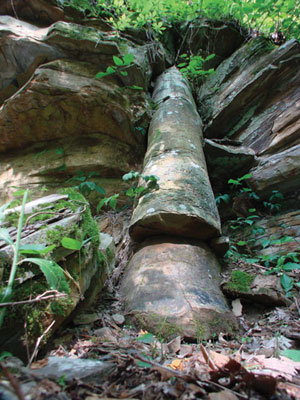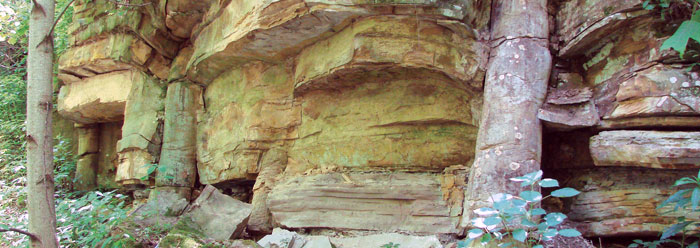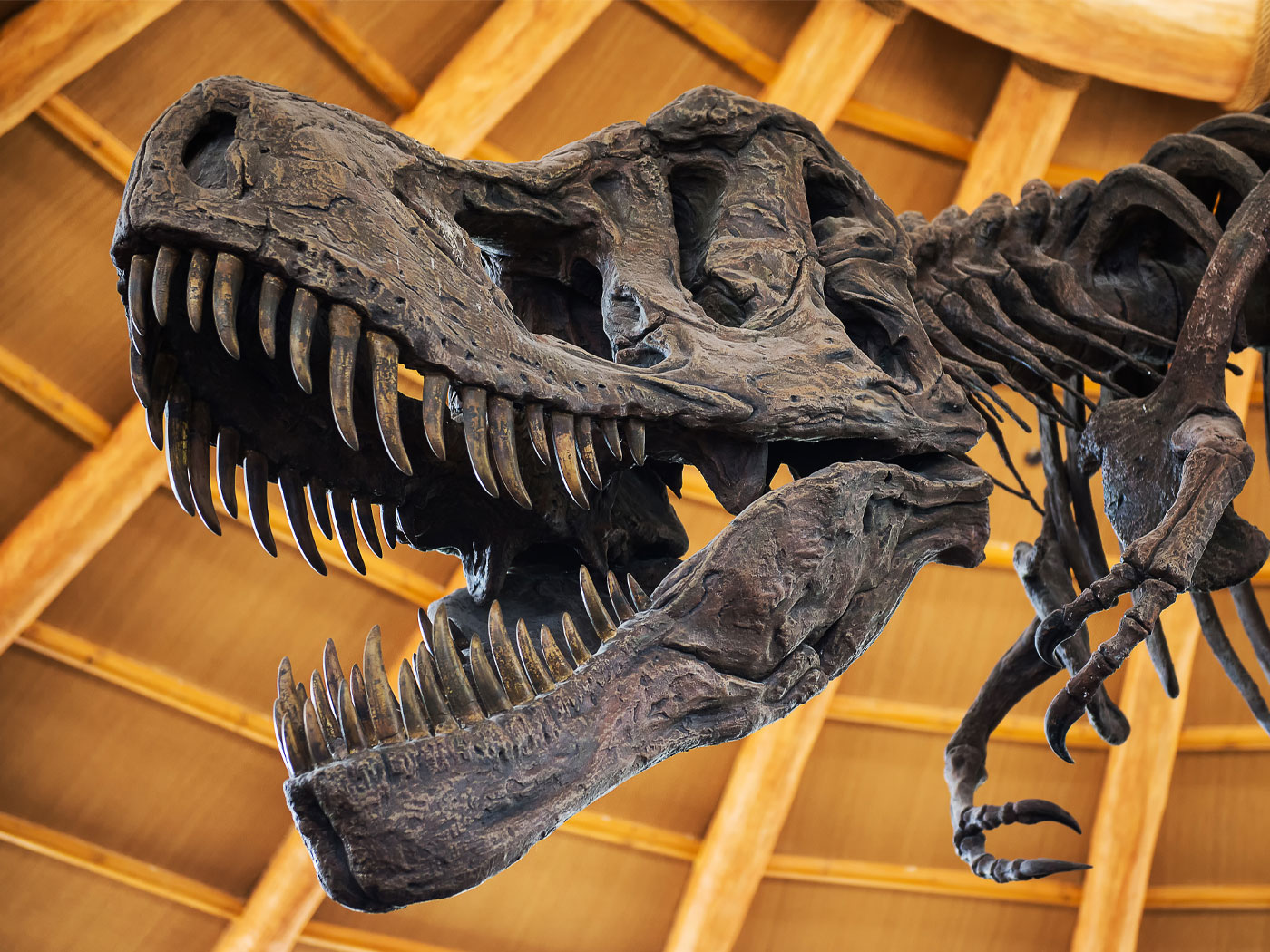Years ago, National Geographic published a remarkable photograph of a polystrate fossil, a fossilized tree that extended stratigraphically upward through several layers of rock in Tennessee. Its roots were in a coal seam, and the overlying deposits included bedded shale and thin carbon-rich layers. An advocate of any form of uniformitarianism would believe that it took many, many years to deposit this sequence of layers (much longer than it takes for a tree to grow and eventually die and decay), yet one vertical fossil extends through them all. This one fossilized tree offered a direct contradiction to the evolutionary mantra that "the present is the key to the past."
 The specific strata surrounding the fossil provided a history. According to uniformitarianism, many years are required for a thick layer of peat to accumulate in a swampy environment. This type of location is quite different from the marine environment in which tiny shale-sized particles are deposited. Over "millions and millions of years" of heat and pressure generated by the subsequently deposited overlying marine sediments, the peat is thought to have metamorphosed into coal.
The specific strata surrounding the fossil provided a history. According to uniformitarianism, many years are required for a thick layer of peat to accumulate in a swampy environment. This type of location is quite different from the marine environment in which tiny shale-sized particles are deposited. Over "millions and millions of years" of heat and pressure generated by the subsequently deposited overlying marine sediments, the peat is thought to have metamorphosed into coal.
The tree was a mature tree, yet could not have grown in the location where the surrounding shale was deposited, since trees don't live long under the sea. Furthermore, the time required for shaley sediments to accumulate must be added to the tree's lifespan, as must the time to deeply bury the coal precursor and create the pressure to generate enough heat to alter the peat into coal. No scenario possible today could account for this sequence of events if evolution’s interpretation of earth history is true.
Creationists immediately recognized the educational value of this remarkable fossil, but evolutionists routinely ignore it. The name polystrate ("many layers") is used only by creationists. You will seldom find it in the standard literature, even though the related concepts are easily grasped. Unfortunately, National Geographic requires a not-insignificant fee for the use of its photographs, and only on occasion was this one used by creationists. The fossil looked rather fragile, and since many polystrates are known, we never tried to go to the site and relocate this particular one.
Recently, however, creationist Ian Juby decided to try and track it down. Much to his surprise, it was still there, looking even better than ever. But there's more--the fossilized tree stood in the neighborhood of numerous other trees. It suggests a significant dynamic event that uprooted, transported, and buried many trees in an upright position.
Just such an event happened at Mount St. Helens in 1980, when an eruption toppled a standing forest. The tree trunks were deposited in Spirit Lake. After a few years of waterlogging, the trunks sunk roots down, in life's position but not life's location. Today there are tens of thousands of upright trees standing on the bottom of the lake. They are being engulfed by fine particles of volcanic ash and clay, and if the underlying organic layer of bark were heated by a future eruption, it would likely metamorphose into coal and duplicate the scenario revealed in the photo.
The eruption at Mount St. Helens taught us much about the effects of dynamic processes. It provided a model for deciphering unseen past geologic cataclysms, and produced effects which before had puzzled us. Our understanding of possible events during the great Flood of Noah's day was substantially expanded, including that rapid deposition of sediments and burial of fossils could be expected during such a deluge. The more evidence that science uncovers, the more it supports the biblical account of earth's history.
* Dr. Morris is President of the Institute for Creation Research.
Photo Credit: Ian Juby
Cite this article: Morris, J. 2009. A Classic Polystrate Fossil. Acts & Facts. 38 (10): 15.














